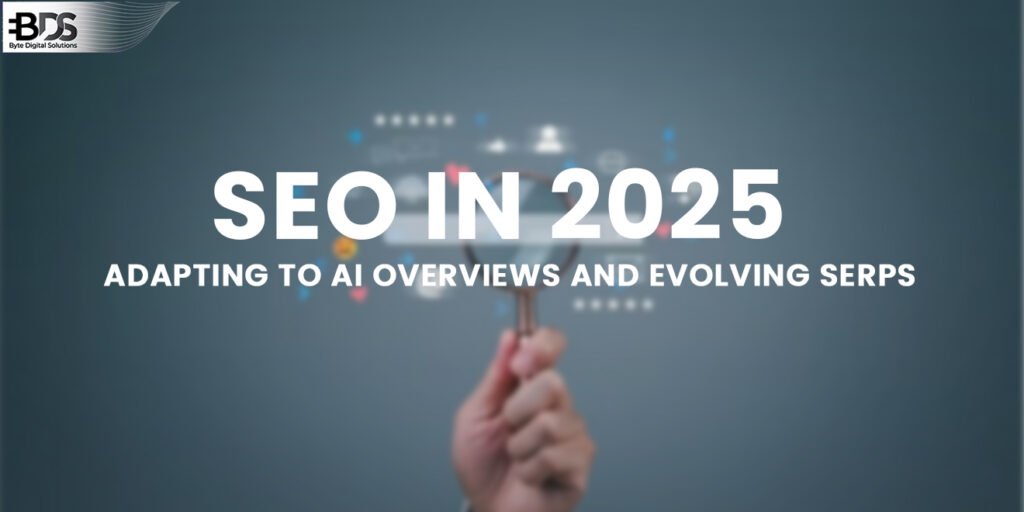
The world of SEO is constantly evolving in 2025. The SEO landscape is defined by rapid technological advancement, shifting user behaviour and growing influence of AI. SEO professionals must adapt to new metrics. Some key trends include the integration of AI-driven automation, the transition from keyword to entity-based optimisation, the critical role of user experience metrics like Interaction to Next Paint (INP), and the need for multimodal content strategies.
What Are AI Overviews?
AI overviews are AI-generated summaries and insights displayed directly on search engines like Google. Instead of users clicking through to websites for information, they often find their answers immediately in these smart previews. These summaries are powered by AI models that scan and synthesise information from various web sources.
Why It Matters:
- AI overviews can reduce click-through rates (CTR).
- They prioritise well-structured, trusted sources.
- They reward concise, clear, and accurate content.
The Impact of AI Overviews on SEO
AI overviews change how content is discovered and consumed. Here are a few key implications:
1. Decline in Organic Clicks
The answers that appear directly in SERPs are less likely to click on links, leading to lower organic traffic. This means that if your page ranks well, then your traffic could suffer if the AI summary provides everything that users need.
2. Greater Emphasis on Authority and Trust
Search engines are selective about which sources they should use to generate AI summaries. The only website that demonstrates strong E-A-T, which refers to Expertise, Authoritative and Trustworthiness, is likely to be featured. This means brands must establish high-quality content, clear authorship, backlinks and consistent branding. If you want your insights to show up in the AI overview, then you need to trust your voice in your niche..
3. Content Format Overhauls
An AI system prefers structured content. It increases your chances of being featured. Your content should be clear, concise, with headlines, bullet points and direct answers to common questions. Use formatting that makes it easy for both users and machines to extract value quickly. Some sections to think like FAQs, bullet points and formats that AI loves to pull from.
4. Rise of Zero-Click Optimisation
Even if a user doesn’t click on your site, the AI overview or featured snippet can still boost your visibility and brand credibility. This is known as zero-click optimisation. In 2025, optimizing for visibility rather than just traffic is essential. It includes your brand name within your content that offers expert quotes or subtle call to action within definitions or tips that ensure you leave a lasting impression. Being a part of AI answers position your brand as helpful and authoritative.
How to Adapt Your SEO Strategy in 2025
Navigating SEO in 2025 demands agility and awareness. As AI overviews reshape how users consume information, your strategy needs to evolve. Here’s how businesses and marketers can pivot to stay competitive.
Focus on Topical Authority
To stand out in AI-driven search results, it’s no longer enough to write a single blog post on a popular keyword. You need to build topical authority by covering your niche comprehensively. This means creating a network of interlinked content pieces that explore a subject from every angle. Think of content clusters and pillar pages together they signal to Google and AI systems that your site is the go-to source for in-depth, trustworthy information on a given topic.
Optimise for Featured Snippets and AI Answers
AI models and search engines favour content that provides direct, concise answers. Implementing structured data (schema markup) also helps machines better understand your content and increases your chances of being pulled into featured snippets or AI overviews. Simplicity and clarity are essential to answer the user’s query in the first few lines of your paragraph when possible.
Improve Page Experience
While AI and content quality are in the spotlight, traditional SEO fundamentals still matter, especially user experience. Your site should load quickly, be responsive on all devices, and meet Core Web Vitals benchmarks. A fast, intuitive experience not only keeps users engaged but also sends positive signals to search engines about your site’s reliability and quality. Don’t overlook UX in your pursuit of AI visibility, it’s part of the bigger picture.
Embrace Semantic SEO
Keyword stuffing is long gone. Today’s SEO is about context and meaning. Semantic SEO involves using related terms, synonyms, and natural language that helps AI models understand the full scope of your topic. When you optimise content semantically, you help machines connect the improving your chances of ranking for a variety of long-tail and conversational queries.
Use Multimedia to Your Advantage
As AI search capabilities expand, multimedia content is becoming more important. Search engines may begin including rich media, like videos, infographics, and audio, in AI-generated results. Including optimised visuals and video content on your pages can enhance user engagement and increase the likelihood of your content being featured. Don’t just focus on text diversify your content formats.
Monitor SERP Features Regularly
Search engine results pages (SERPs) are evolving faster than ever. From video carousels and People Also Ask boxes to image packs and AI panels, you need to keep an eye on how your target keywords are displayed. Use SEO tools to monitor these changes and update your content strategy accordingly. Tailoring your pages to match current SERP formats can significantly boost your visibility.
Future-Proofing Your SEO Efforts
SEO in 2025 requires a blend of technical skills, content marketing, and AI literacy. To thrive:
- Track AI trends and Google algorithm updates.
- Test and adapt your strategies frequently.
- Collaborate across teams: SEO, content, design, and development.
Final Thought
AI overviews and evolving SERPs are reshaping digital marketing. While some may see this as a challenge, it’s actually a major opportunity. Brands that embrace these changes and prioritise helpful, well-structured content will not only survive—they’ll dominate the search landscape.
